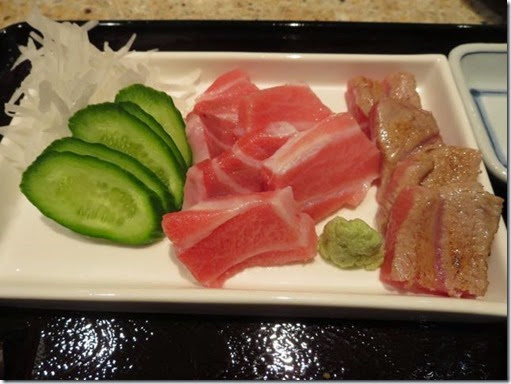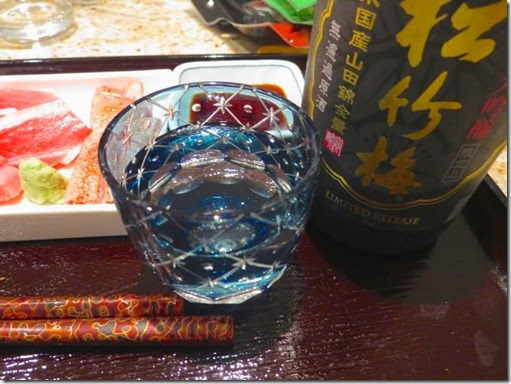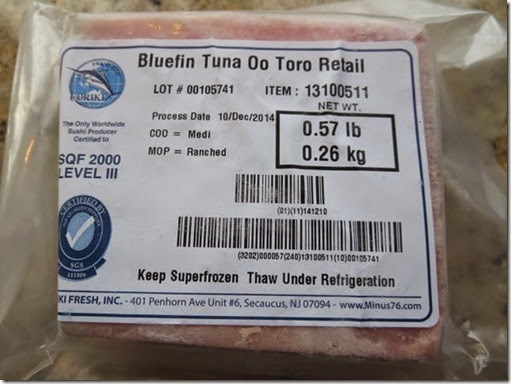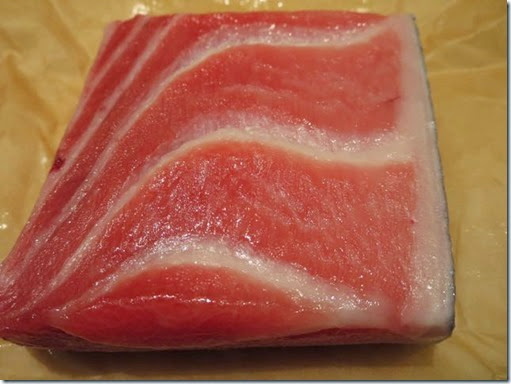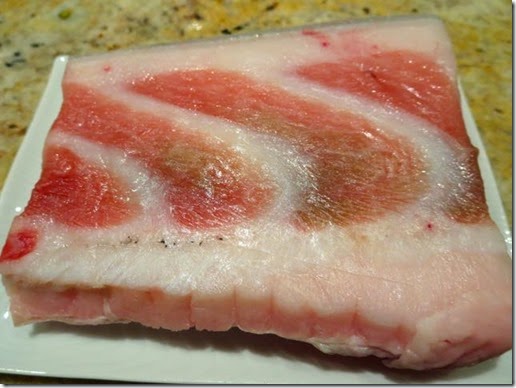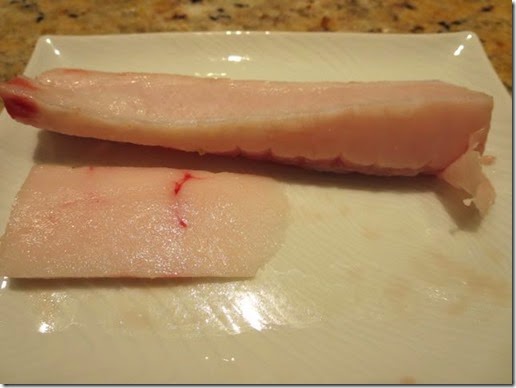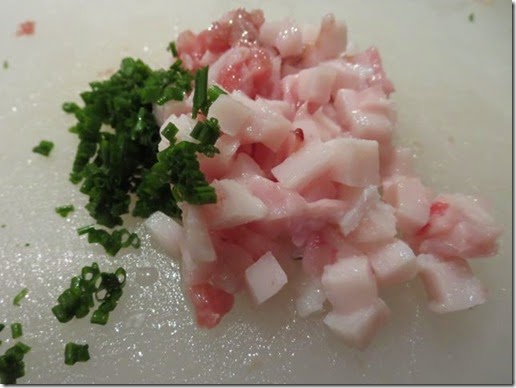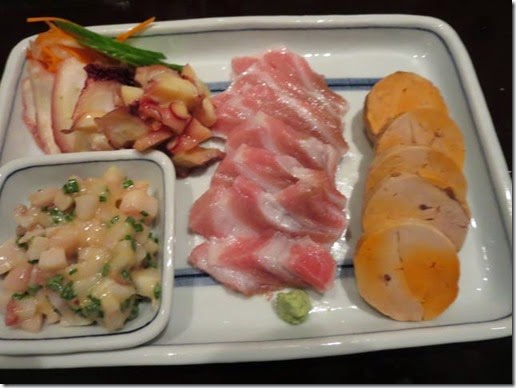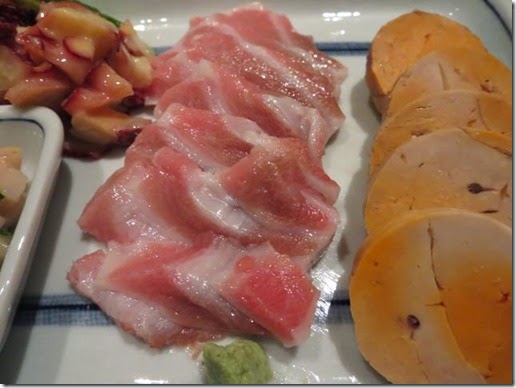My wife came up with the idea of making miso soup in a solid form. (This was a natural progression from the various other panna cottas she has made recently. Also this is what happens when she is turned loose with gelatin; she was well-known in the past for her various "gelatin" concoctions). The idea appealed to me because I like to have miso soup with any meal (even breakfast). My wife on the other hand does not like having soup in the evening. So, if we could come up with a dish which had the taste of miso soup but was not liquid it would be a win-win for both my wife and myself. This recipe was my first attempt. I intended to recreate miso soup with potato, onion, and wakame seaweed ワカメ、ジャガイモと玉ねぎの味噌汁. The reason I choose this particular combination of ingredients is a long story.*
*Digression alert: When my late-brother and I were small (probably I was a just in 1st grade), my late-father was home but my mother was out (probably attending a PTA meeting or something). My father almost never cooked but when 4 pm came around, he suggested "we must be hungry" and decided to cook something for us (in retrospect, I suspect he was the one who was hungry and could not wait my mother to come home). In any case, he made rice (using an electric rice cooker) and miso soup made of potato, onion, and wakame seaweed. When my mother arrived back home with some ready-made side dishes for supper, she was mighty miffed to find us finishing up a supper of rice and soup. But somehow, the taste of this miso soup remains a favorite for me.
The picture below shows the miso soup panna cotta, which included potato and onion, served with cucumber, wakame seaweed, and red radish as garnish. To make it interesting I included unflavored soy milk and silken tofu (the white squares).
I decided to add "sumiso" 酢味噌 (miso, rice vinegar and sugar) sauce as well.
I also put sumiso sauce on the top of the panna cotta.
The panna cotta had a smooth texture and a gentle miso flavor. We could taste the sweetness of the onion but the addition of soy milk may have made it taste a bit vague or muted. The sumiso sauce also overwhelmed the dish. So, next day, I served the panna cotta simply with wakame seaweed and thinly sliced scallion.
This tasted better and closer to the original miso soup taste but there is room for improvement.
Ingredients (about 2 servings):
1 cup Dried fish and kelp broth (from bashi pack).
1 cup unflavored soy milk
1 large white potato, peeled and cut into a dice.
1 large onion, cut into thin strips
2 tbs Miso
2 envelopes of unflavored powdered gelatin
1/3 silken tofu
Directions:
1. I cooked the potato in the broth until soft (15 minutes) and added onion and cooked another 5 minutes (left in the picture below).
2. I dissolved the miso. I added more as I tasted. I needed to season it rather strongly since it would be diluted by the addition of soy milk.
3. I added the miso soup into a blender and pureed it smooth.
4. Meanwhile, I put soy milk in a pan, sprinkled unflavored powdered gelatin (two envelopes) on the surface to bloom. I gently heated up and dissolved the gelatin using a wire whisk (right in the picture below). I combined the miso soup and soy milk with the dissolved gelatin.
5. I placed small cubes of tofu in the bottom of a small ramekin and poured the mixture on top.
6. I refrigerated until set.
7. Like the other panna cotta dishes we made, it will come out without any problem by running the thin blade of a knife around the perimeter and introducing air to the bottom of the ramekin.
The two serving variations above were certainly "edible" but we were not satisfied. My wife suggested leaving out the soy milk. She also suggested serving the potato around the panna cotta rather than pureed in it. I will certainly incorporate her suggestions. I am now on a mission to make the perfect miso soup panna cotta.




































